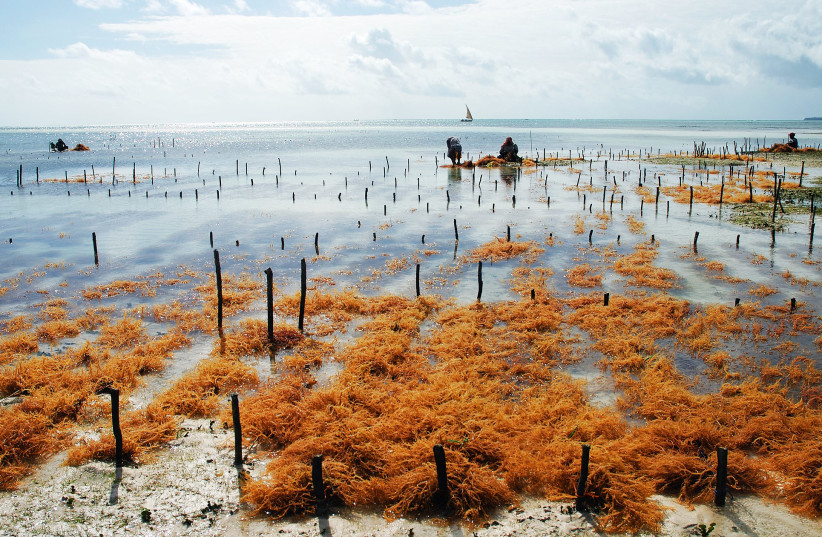The opportunities of seaweed aquaculture are boundless and could help tackle many problems, including hunger, malnutrition, poverty, and even climate change.
This is the conclusion of a peer-reviewed study published in the June edition of the Global Food Security Journal and authored by researchers from the Friedman School of Nutrition Science and Policy at Tufts University.
Seaweed farming and water-based food systems in general have increasingly been suggested in recent years as a solution to problems caused by traditional agriculture, like the negative impact on freshwater resources, biodiversity, and soil quality. Food production is also estimated to cause on third of worldwide greenhouse gas emissions.
By producing and selling seaweed instead of traditional crops grown on land, farmers in low- and middle-income countries (LMICs), especially in the coastal regions of Africa and Southeast Asia, could increase their incomes. This could raise their incomes as well as lessen the negative impact of traditional farming, said Patrick Webb, the Alexander McFarlane Professor of Nutrition at the Friedman School.
Fighting food insecurity with seaweed
“One of the biggest problems of food insecurity in LMICs is the unaffordability of healthy diets,” said Patrick Webb. “There are roughly 3.5 billion people in the world who can’t afford a healthy diet even if they choose local foods at local prices. For many of those people, cultivating and selling seaweed would lead to higher incomes and improved nutrition through purchases on the market.”

The farmers who turn to growing seaweed could see a rise in buying power, as the cultivation requires no use of land, freshwater or chemical fertilizers. As the worldwide demand for seaweed grows, this could become very profitable and in turn lead to healthier diets in for the population of LMICs.
For centuries, people in parts of Asia have used the same, fairly simple techniques to grow seaweed. “A lot of what we're looking at on the farming side is not about finding new crops or different kinds of crops. It’s about what’s already being grown that could be scaled up cost-effectively,” Webb said.
Research has also found that perennial brown algae farms absorb up to ten tons of CO2 per hectare of sea surface per year, so in addition to its low carbon footprint, seaweed could even help to dramatically reduce methane gas emissions.
“Unless we get significant warming of the oceans, cultivating seaweed offers a way that is not just climate-friendly, but climate-proof,” said Webb. “We don’t know how soon the industry will start to experience the negative effects of climate change, but the potential looks good. By farming seaweed, it’s not going to accelerate those negative effects. Whereas cutting down trees and adding more livestock certainly would.”
Still, the researchers caution that some challenges remain before seaweed can become the solution to all of the world's problems.
The potential net nutrition and health benefits of seaweed, particularly in undernourished or at-risk populations in LMICs, are still not sufficiently understood and require more research.
Additionally, building up the capacity for farming, processing and trading seaweed will require significant public and private investment in the coming years, since at the moment, there is still little production or consumption of seaweed in LMICs where food insecurity is high.
Lastly, official data on seaweed production, trade and consumption is scarce and unreliable, meaning that national and global statistics on patterns and trends should be treated with caution.
